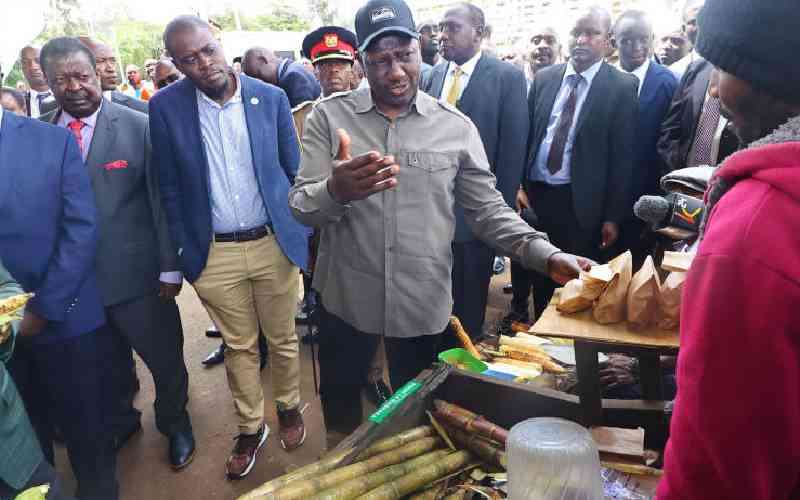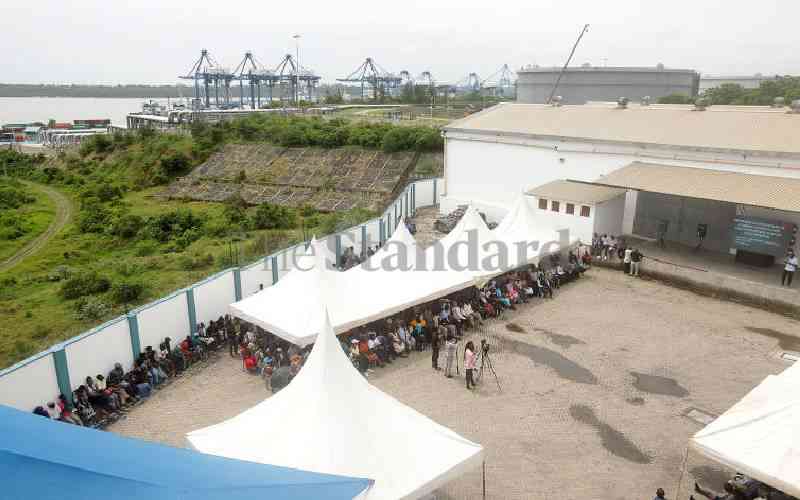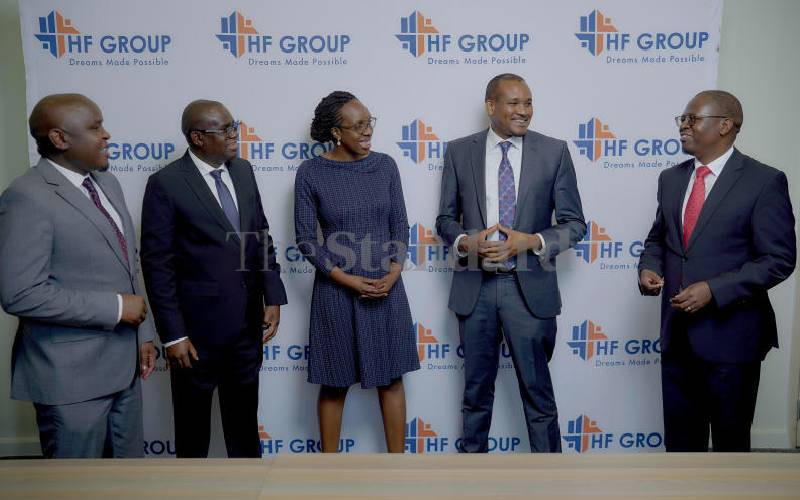
President William Ruto plans to spend Sh3.64 trillion in the next financial year - the country's biggest budget in history.
The president's first budget to draw up and implement since taking office on September 13 is 10 per cent higher than the Sh3.3 trillion budget for the current financial year to June 2023, crafted in the last day's of the Jubilee administration and being implemented by Ruto's government.
The plan reflects a new populist approach Ruto has taken to budgeting - spend big and bank on those investments to pay off in a stronger economy, higher wages and reduced poverty.
The National Treasury, in the Budget Review and Outlook Paper (Brop), said yesterday the country's budget is expected to reach Sh3.64 trillion in the 2023-24 financial year.
This will be split into recurrent spending of Sh2.42 trillion, or 66 per cent of the budget, and Sh796.4 billion for development expenditure.
Treasury says in the document, which sets pace for the formulation of the next budget, that the government will increase tax revenues as a percentage of the gross domestic product (GDP) from 17.3 per cent over the current financial year to 17.8 per cent in 2023-24 financial year.
It also aims to reduce its expenditure as a percentage of GDP from 23.3 per cent this year to 22.4 per cent in the next financial year.
- Ruto remains mute as healthcare crisis worsens
- Government calls on KMPDU to end strike
- Ruto meets KMPDU officials, promises lasting solutions to end industrial strikes
- Ruto forms a 20-member team to audit healthcare resources
Keep Reading
Ruto will be banking on increased tax collections by Kenya Revenue Authority (KRA) to reduce the need for borrowing and bridge the budget deficit that it estimates will be at Sh695.2 billion during the year.
"The overall expenditure and net lending are projected at Sh3.64 trillion or 22.4 per cent of GDP," says the Brop dated November 2022.
"Of this, recurrent expenditure will amount to Sh2.42 trillion (14.9 per cent of GDP) while development expenditure will amount to Sh796.4 billion (4.9 per cent of GDP)."
Transfer to counties and Contingency Fund are projected at Sh417.3 billion and Sh5 billion, respectively, says Treasury.
KRA is expected to collect Sh2.57 trillion in 2023-24 financial year, which is 17 per cent more than the Sh2.19 trillion it is projected to collect over the current financial year to June 2023.
It is also 27 per cent more than the Sh2.03 trillion that the taxman collected over the financial year to June 2022.
When the tax collections are put against recurrent expenditure at Sh2.42 trillion, it would mean that nearly all of what KRA will collect will go towards recurrent budget.
Total revenue, including Appropriation-in-Aid, will reach Sh2.89 trillion.
"In the 2023-24 financial year, total revenue including Appropriation-in-Aid (A-i-A) is projected at Sh2.89 trillion (17.8 per cent of GDP). Of this, ordinary revenue is projected at Sh2.57 trillion (15.8 per cent of GDP)," the Brop says.
"This revenue performance will be underpinned by the on-going reforms in tax policy and revenue administration and boosted by economic recovery occasioned by implementation of priority programmes supporting economic recovery, priority projects and programmes of the Government."
Treasury says it will bridge the Sh695.2 billion budget deficit by borrowing from the domestic market (Sh496.6 billion) and externally (Sh198.6 billion).
"The resulting fiscal deficit of Sh695.2 billion (4.3 per cent of GDP) in 2023-24 financial year will be financed by a net external financing of Sh198.6 billion (1.2 per cent of GDP) and a net domestic financing of Sh496.6 billion (three per cent of GDP).
"Additionally, the government will continue to implement its fiscal consolidation plan to contain the pace of growth in debt."
In this regard, particular emphasis will be placed on aggressive revenue mobilisation, including policy measures to bring additional revenue and reign in expenditures to restrict its growth.
"As a result, the overall fiscal deficit is expected to decline from 5.8 per cent of GDP in financial year 2022-23 to 4.3 per cent of GDP in financial year 2023-24.
"This will boost the country's debt sustainability position and ensure the country's development agenda is sustainably funded," reads the document.
Treasury also says it will continue with the implementation of the Hustler Fund as among modalities to ease access to credit and empower Kenyans to create jobs.
The fund launched on November 30 had as of Monday, December 19, disbursed Sh9.58 billion to 16.59 million Kenyans.
It has so far been dishing out personal loans but the government said it plans to start offering loans to businesses in February 2023, which will target groups, chamas and co-operatives, and will be channelled through saccos, microfinance institutions and banks.
"The government through the Financial Inclusion Fund will inspire growth and innovation in the micro, small and medium enterprises (MSME) sector and boost economic growth and entrench the saving culture among Kenyans," the document says.
Giving cheap credit to Kenyans through the Hustler Fund and providding cheap fertiliser to farmers, Treasury said, "aim at bringing down the cost of living, eradicating hunger, creating jobs and providing the greater majority of our citizens with much needed social security while expanding the tax revenue base and improving foreign exchange balance".
On Monday, the Ministry of Cooperatives and MSME Development said the government would be providing an annual budgetary allocation of up to Sh50 billion for the next five years for the establishment and operationalisation of the Hustler Fund.
 The Standard Group Plc is a multi-media organization with investments in media platforms spanning newspaper print
operations, television, radio broadcasting, digital and online services. The Standard Group is recognized as a
leading multi-media house in Kenya with a key influence in matters of national and international interest.
The Standard Group Plc is a multi-media organization with investments in media platforms spanning newspaper print
operations, television, radio broadcasting, digital and online services. The Standard Group is recognized as a
leading multi-media house in Kenya with a key influence in matters of national and international interest.











